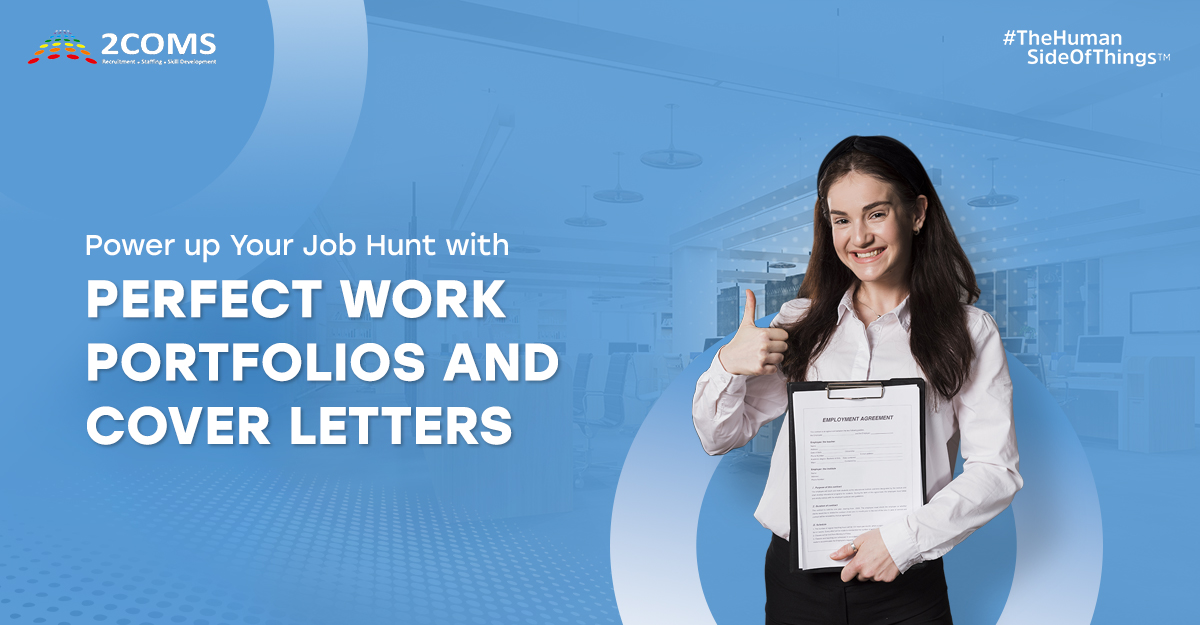It's critical to distinguish yourself from the competition in the job market nowadays and show potential employers your unique skills and expertise. The work portfolio and cover letter are two crucial instruments for doing this. You may improve your chances of getting your dream job with a well-organized work portfolio and an engaging cover letter.
This blog post will discuss how to prepare both components successfully, highlight their significance, and offer helpful advice to make your job application stand out.
Learn How to Use a Work Portfolio
A work portfolio is a compilation of your finest works, accomplishments, and completed projects that showcase your abilities and experience. It's a physical manifestation of your powers and a window into your past successes and future organizational contributions.
Formatting Your Work Correctly
The first step in making a portfolio of one's work is deciding on the best format. Physical portfolios, digital portfolios (PDFs or websites), or hybrids are all viable options; it depends on your job and the type of work you're showcasing. Make it easy for potential employers to locate the information they're looking for with a clean, straightforward design.
Exhibiting Your Masterpieces
Create a portfolio that showcases your best work. Ensure each element focuses on a different expertise or accomplishment to demonstrate adaptability. Employers will better grasp your value to the company if you provide some background on each project you include.
Showcasing Successes and Results
Try to put a number on your accomplishments if you can. Include numbers and statistics to support your claims of success in past positions. After reading this, potential employers will see exactly how your skills will benefit their company.
How To Compose A Cover Letter
Here are some steps you can take to create an effective cover letter for your portfolio:
Please choose how you'll send it:
When and how you send your cover letter significantly affects its form and content. For example, if you're bringing your cover letter to an interview, there's no need to say that you want a consultation in your cover letter.
Contact the right person:
If you send a cover letter, resume, and portfolio to a possible employer, you should address the hiring manager by name. If you're taking your portfolio cover letter to an interview, you can make the address more general, like "To the human resources department."
Write a solid opening:
The opening is essential to your portfolio cover letter since it needs to grab the hiring manager's attention and convince them to keep reading. Ensure you clearly state the job you're applying for and show interest in the opportunity.
Mention any recommendations:
If a teacher, tutor, or mentor suggested you apply for a job with the company or industry, include their name and job title in your introduction. Be aware of any possible conflicts of interest, like if the person referring you works for a direct competitor. You don't have to mention the recommendation in your cover letter in those cases.
Write down your skills:
Check your resume to see which details best show your qualifications for the job. Write three to five short sentences about your work experience, skills, and education using this information. If you're going into a new industry but have volunteered or interned in the field, talk about how those experiences made you interested in the job. You can show that you are an ideal candidate by describing how your strengths would help you in the job you are applying for and allow you to meet the job's standards.
Show interest:
As you write the end of your cover letter, be sure to show that you are interested in the job and can do what is needed. These details strengthen your cover letter by showing interest in the opportunity.
Format Of A Cover Letter
Following a few basic steps will help you write an effective cover letter that will get you noticed by employers:
- Begin by providing your name and address.
- Include the date as well.
- Include the name and address of the receiver.
- Begin with a brief introduction.
- Include an introduction paragraph describing your desire to apply.
- Write a second paragraph about yourself.
- In the following section, concentrate on another reason why you are eligible.
- Finally, explain why you are exceptionally qualified.
- Ultimately, sign your name.
- These steps will guide you in creating a cover letter for your next job application.
Why should you include a cover letter with your portfolio?
Including a cover letter with your portfolio effectively highlights your qualifications for a specific position, such as your skills and experience. Cover letters for portfolios also allow you to convey your unique qualities and enthusiasm for the industry, work, or company for which you are applying. Including this information in your portfolio can make your application stand out and attract the recruiting manager's attention.
A portfolio cover letter also provides a sample of your writing to recruiting managers. Verbal and written communication is essential in various roles; therefore, demonstrating your ability to convey information clearly and concisely could strengthen your application and emphasize your eligibility.
Final Thoughts
It takes time and careful planning to create an effective work portfolio and cover letter, but the effort is worthwhile. With the help of these materials, you may stand out from the crowd and demonstrate your exceptional worth to prospective employers. You may assemble a robust package that dramatically increases your chances of getting the job you want by using the appropriate format, selecting your excellent work, customizing your cover letter, and providing a convincing and compelling narrative. Remember that having a solid portfolio and cover letter prepared can open up a world of career prospects. All the best!



























